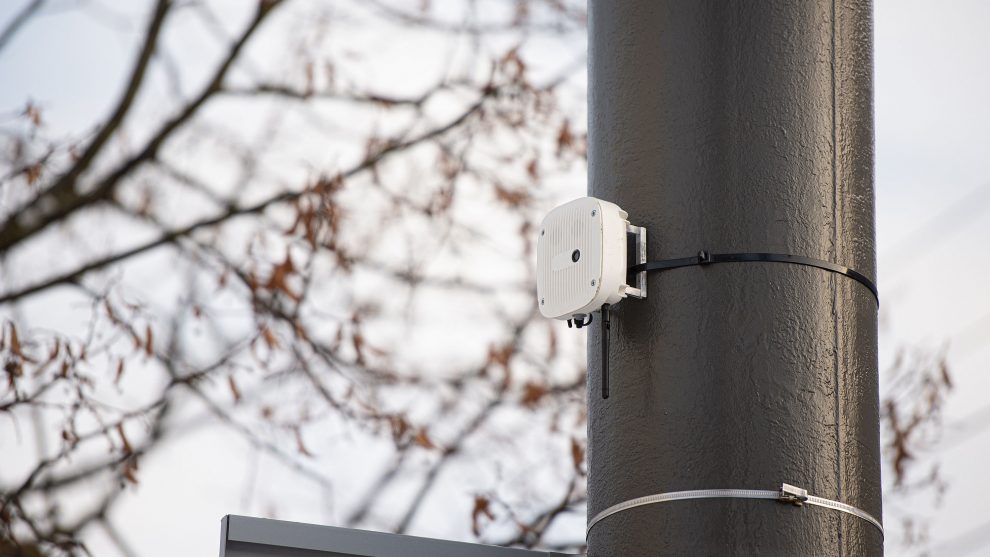Modern Air Quality Monitoring System in Kaunas

Paskelbta: 2021-01-29 (Friday)
This week, an air quality monitoring system that has no analogues in Lithuania started operating in Kaunas. Autonomous measuring devices will capture potential pollution in 20 different locations across the city. The obtained data will allow to create an accurate map of problem areas and to react promptly by eliminating pollution sources.
System with many parameters
“Everyone knows for a long time that Kaunas is a green city. However, as in any big city, there is no shortage of cars, industry and other potential sources of pollution. For us, it is very important the quality of weather in Kaunas, therefore we are investing in new technologies that will allow us to accurately identify problem areas and take appropriate actions,” said Mr. Vilius Šiliauskas, Director of Kaunas City Municipality.
Sensors approved by Belgian laboratories and specially configured in the city will detect the concentration of volatile organic compounds and other pollutants – carbon monoxide, nitrogen dioxide, sulfur dioxide and particulate matter. Air temperature and relative humidity will also be monitored.
“Such meters are a novelty in Lithuania so far. We will now be able to monitor in real time who and where pollutes within the neighbourhoods. Once we know the objective factual information, we will solve the problems immediately. Having such data in our hands, we will be able to quickly inform the Environmental Protection Agency about the violations,” said Ms. Radeta Savickienė, Head of the Environmental Protection Department of Kaunas City Municipality.
The first meter data reached the specialists working with this system already on Monday. In the future, it is hoped to develop a platform where residents will be able to monitor the air pollution situation in the city in real time.
Development was necessary
Ambient air monitoring in Kaunas has been carried out for almost three decades. Until now, specialists have regularly monitored the condition of the main components of Kaunas city environment, collected data and analyzed the ongoing changes based on the data of only two air quality monitoring stations.
“One station was established in Petrašiūnai, the other air quality monitoring point was established in Noreikiškės, Kaunas district. It is obvious that these two points do not really reflect the situation of the whole city, so development was necessary,” Ms. R. Savickienė explained.
According to her, monitoring air quality in the city at just a few automated measuring stations is not enough. Ambient air quality is constantly changing, which is determined by a number of factors – the activities of industrial and energy companies, transport, heating of private homes, especially now, in the cold season.
Public health professionals recognize that air quality indicators are critical and directly related to the well-being and health of the population. Increased contamination can lead to serious illness. Thus, the new system and more effective air quality control will be an effective preventive measure.
New technologies are being introduced
For the next two years, the air quality measurement and monitoring service in Kaunas will be provided by the company “Dicto Citius”, with which a cooperation agreement was signed last year in November. Under it, a system consisting of several dozen mobile monitoring devices will be installed, equipment maintenance will be ensured and data will be provided to municipal specialists. The innovation will make it possible to “cover” a much larger part of the city and obtain objective data.
“Improving technologies do not bypass the field of environmental monitoring. Smart cities use innovative technologies to provide services and address issues such as air pollution, congestion and safety issues. It is gratifying that Kaunas is one of such cities,” noted Mr. Tadas Metelionis, Deputy Director of Kaunas City Municipality.
The new tool will make it possible to react more quickly to sources of pollution, analyze the causes and take appropriate measures. Over time, a clear map of problem areas will be created. The data obtained will also help to make effective decisions on the regulation of traffic flows and the development and expansion of individual urban areas.





